That said, I find it charming how similar some aspects of dusky-footed woodrat life are to our own.
Not only do they build houses and stock their pantries with fave foods - they also have small territories they defend fiercely (ala the yard around your home), and live in neighborhoods with other woodies, with whom they interact with on an almost daily basis.
I.e., they live in loose communities and have an active social life. Especially this time of year, as the females are selecting their mates.
So, in our first episode of Woodrat Theater, we're going to explore that day-to-day with Ms. & Mr. Most-Interesting - our cutest couple from The Coast Packrats.
First off, let's talk about woodrat home life.
The female woodrat is a truly self-sufficient lady. Not only does she build and maintain the house, she lives solo and raises the pups on her own - doing all the foraging and food caching. I.e., the male is pretty useless - being only good for genetic material and chasing off sons when they come of age. And, since he also lives alone in his own separate house, he pretty much only comes around when he's looking for love. And when football season is over.
Our Ms. Most-Interesting's stick house is strategically built in and over some cracks and crevices among a tall cluster of rocks, under a bay laurel and a small live oak or two.

Neotoma fuscipes annectens stick house among rocks, and under bay laurel and live oak
Being a wise woodrat, she's no layabout. She spends much of her time packing her pantries, and repairing her fortress...
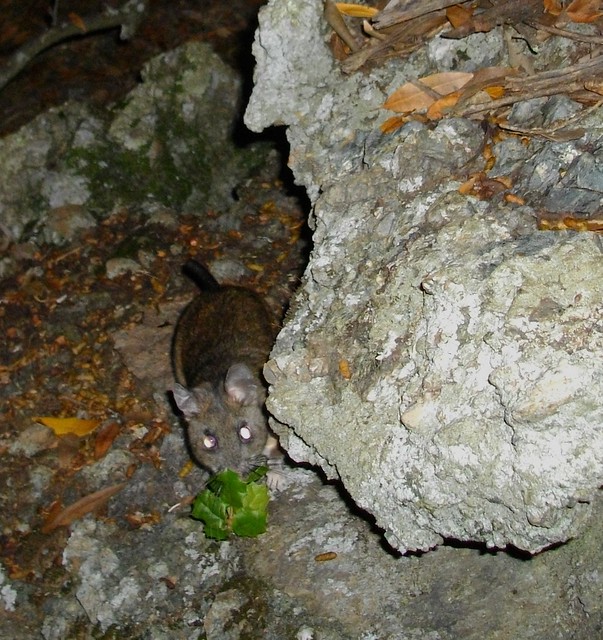
Ms. Most-Interesting bringing home a live oak sprig to cache. Live oak is one of the top foods of the dusky-footed woodrat, a herbivore with a taste for tough leaves

Adding sticks to her house. Woodies maintain and fuss over their houses pretty much year round. A dumpy house is often a sign of vacancy
But sometimes, neighborhood males come poking around...
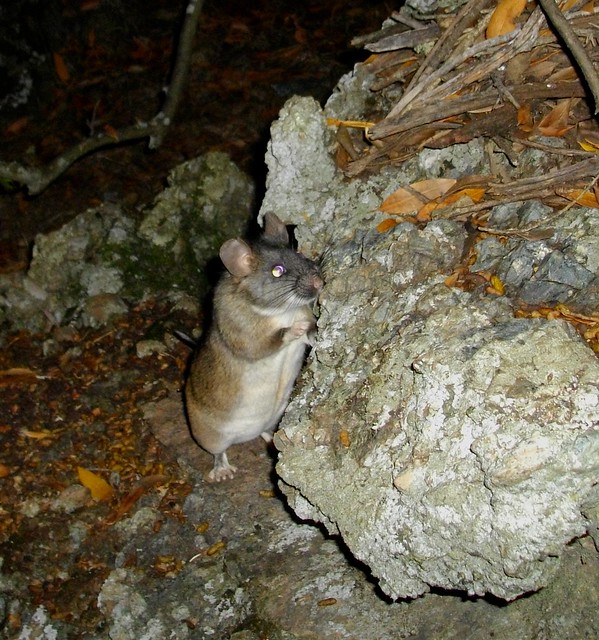
Big gray-faced male stopping by. A dusky-footed woodrat's home range is typically about a 50-100 foot radius around their house, depending on topography, forage & safety, and will overlap with multiple other woodrat houses and home ranges (the neighborhood)
So she comes out to chat with them...

Ms. Most-Interesting confronting Grayface
And chase them off if they don't measure up...
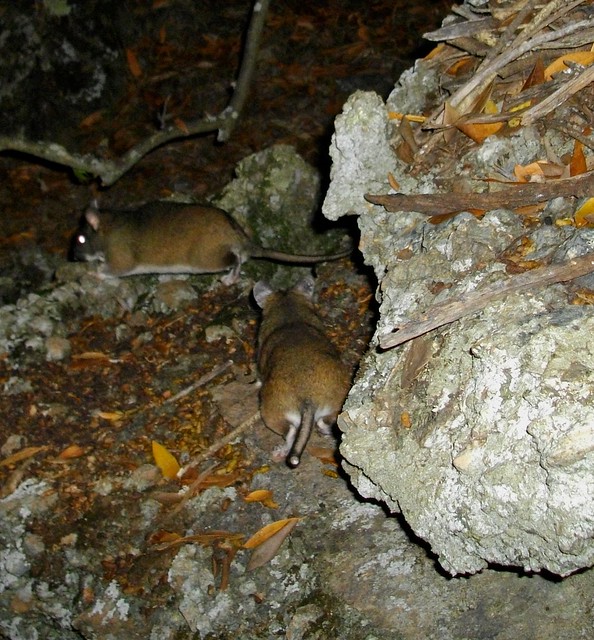
Grayface getting run outta town. A woodrat's territory is right around its house
Why? Because she's already chosen her mate - Mr. Most-Interesting. Quite the handsome gent too - that eye ring is way cool, and the 1/2 ear - very tough.
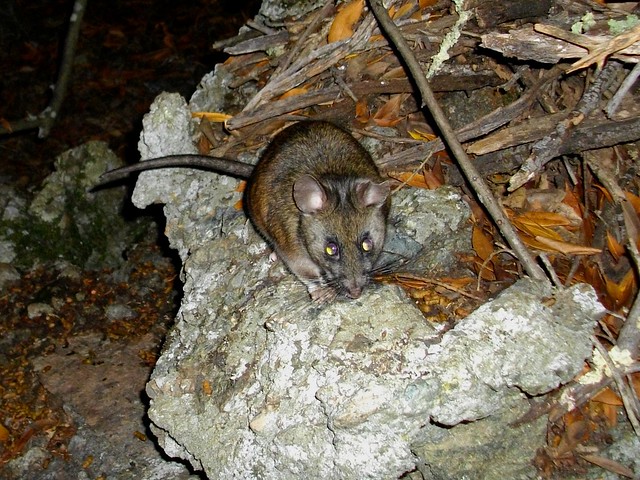
Mr. Most-Interesting - the male she's selected as her mate. Woodrats typically breed in late winter through spring. In drought years she may not have pups at all, and in oak mast years she may mate 4 or 5 times in a year (they only have 2-3 pups per)
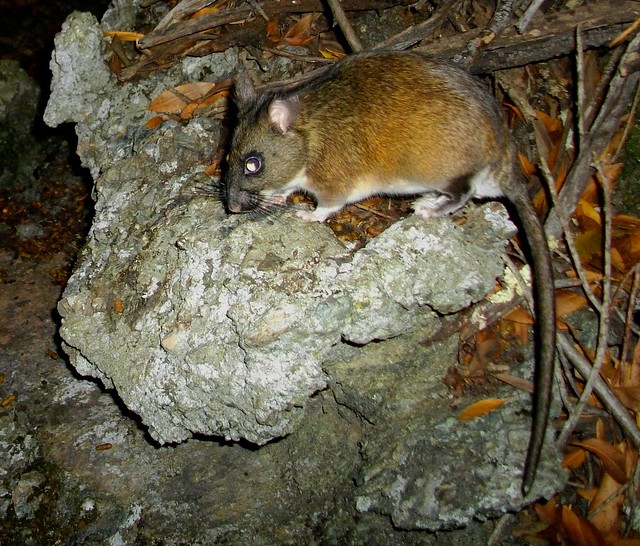
Doesn't get much more dusky-footed than that. Also note the softness of the pelage, and the almost equal proportion of his tail and body - classic Neotoma fuscipes features
And, as the gray-faced male later learned, she takes her selections seriously.
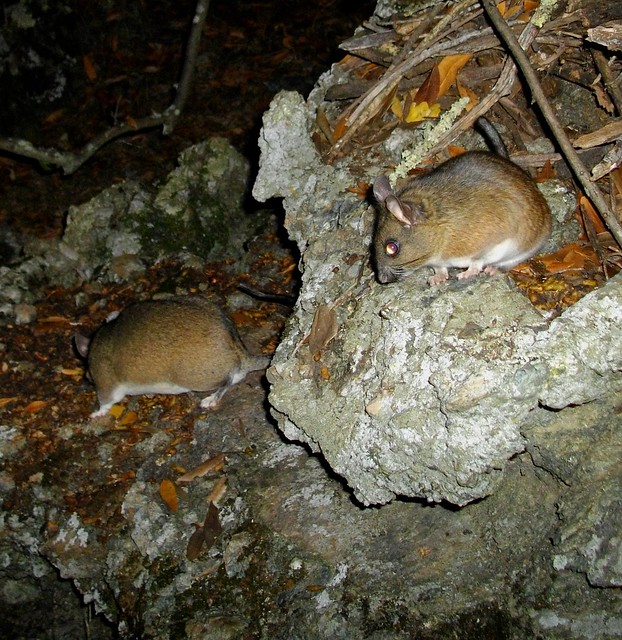
Grayface coming around once more. Maybe there's a shortage of females in the 'hood?
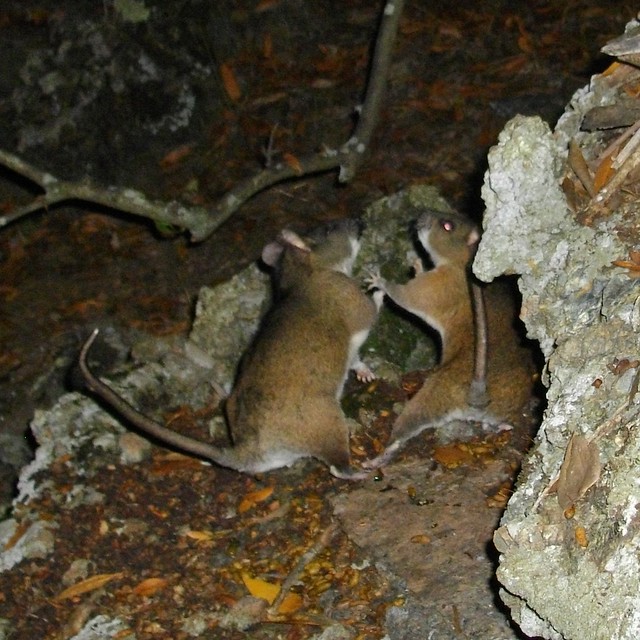
Ms. Most-Interesting slapping around Grayface for coming into her territory. Showing that she ain't no desperate housewife, and he better keep his genes on.
Hmmm... Maybe I'm not anthropomorphizing woodrats.
Perhaps I'm really just Neotomapomorphizing humans.
Next up - the Ecotones, and their cold-blooded secret...
Editor's Post-Note: here are 6 woodrat stories that included this post, in order:
- The Coast Packrats
- Battles Under the Bay Laurel
- The Ecotones
- Life on Berry Lane
- Living in the Sticks
- Hanging with Miss Moss
References:
- Numerous amazing papers by Marjorie D. Matocq, Museum of Vertebrate Zoology and Dept. of Interpretive Biology, UC Berkeley, and Dept. Biological Sciences, Idaho State University (and now University Nevada, Reno) - including the following:
- Reproductive success and effective population size in woodrats, Molecular Ecology
- Morphological and molecular analysis of a contact zone in the Neotoma fuscipes species complex, Journal of Mammalogy
- w/ Eileen A. Lacy - Philopatry, kin clusters, and genetic relatedness in a population of woodrats, Behavioral Ecology
- Roberta Fargo, William F. Laudenslayer, Jr., USDA Forest Service - Are house counts reliable estimators of dusky-footed woodrat population size?, Transactions of the Wildlife Society
- Howard F. Sakai, Barry R. Noon, US Forest Service - Between habitat movement of dusky-footed woodrats and vulnerability to predation, Journal of Wildlife Management
- The American Society of Mammalogists, Nov 1991, No. 386 - Neotoma fuscipes
- Dr. C. Hart Merriam - Abstract of a study of the American wood rats, with descriptions of fourteen new species and subspecies of the genus Neotoma, Proceedings of the Biological Society of Washington
- E. W. Jameson, Jr., and Hans J. Peeters, UCPress - Mammals of California
- Smithsonian National Museum of Natural History - Neotoma fuscipes
- Wikipedia - Neotoma fuscipes
- Nature of a Man (this blog) - The Coast Packrats

Wwow, lots of great rat content here. I rarely see these white-bellies though I often see their nests, so the photos and descriptions of behavior fill in a lot of gaps for me. Now I am going to try and see if I can tell what is an occupied/groomed stick nest and what is an abandoned/messy nest. I often look for scat and urine smell but my nose doesn't always work so well in allergy season. Thanks for doing all that reading and connecting it to the photos for us. Gonna share this!
ReplyDeleteAWESOME!!! I <3 woodies! One note though, Marjorie Matocq is now here at the University of Nevada, Reno.
ReplyDeleteGreat super clear shots, Ken.
ReplyDeleteThis is such a ratty story. I love it.
ReplyDeleteDid somebody get the tip of her tail? It looks a bit stubby and shorter than the males's.
ReplyDeleteThanks all. Glad you're liking them, because there's still lots more to learn from the secret lives of woodrats.
ReplyDeleteThanks Christopher for the update on Marjorie Matocq. I really enjoy her work. Funny - I even thought about sending her some of these shots (and some still to come) because I thought she might not often see woodies in this kinda light. :)
Jake - great eye. Ms. Most does have a shorter, blunt-tipped tail. I've looked at it in many high-res shots, and it looks so well healed, that I wanna surmise that it happened when she was very young.
I think I have sent one or two to Marjorie, but I certainly send them to her graduate students! Thanks for the great material!
ReplyDelete